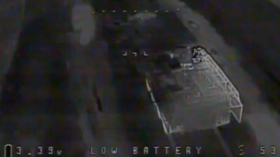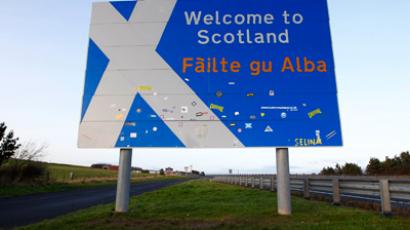'Guide to independent Scotland': Edinburgh unveils break-up with UK blueprint
Scotland has launched its first extensive blueprint for independence in a new 670 page white paper, described by Scottish first Minister Alex Salmond as a ‘mission statement’ for Scotland’s future.
The paper, called Scotland's Future: Your guide to an independent Scotland, was launched in Glasgow on Tuesday, and outlined Scottish plans to cut corporation tax, extend free childcare, and up the minimum wage as well as ensuring public services remain intact.
Salmond urged Scotland’s four million voters to seize the ‘once-in-a-generation’ chance to lend their support to the creation of a fairer country by voting to secede from the UK.
“This is the most comprehensive blueprint for an independent country ever published, not just for Scotland but for any prospective independent nation,” Salmond said. “But more than that, it is a mission statement and a prospectus for the kind of country we should be and which this government believes we can be.”
Salmond added that UK Prime Minister David Cameron would be breaching the Scottish public's trust if the UK refused to let any future independent Scotland join a sterling currency union, aiming to retain the pound.
“The Bank of England and sterling are as much Scotland's assets as London's assets. They are certainly not George Osborne's assets,” he said. In April Chancellor George Osborne warned that if Scotland left the UK, they would no longer be able to use the British Pound as a currency.
Salmond added that the two countries would continue “constructive [work] together.” The process of Scotland securing its independence would also see the country taking 90 percent of North Sea oil, but losing Trident nuclear weapons and the notoriously unpopular ‘bedroom tax’.
The referendum will be held on September 18, 2014. Between the launching of the white paper and the September vote, Scotland will be pursuing a diplomatic ‘charm offensive’ to secure independent Scotland’s membership from both the EU and NATO.
The paper states that: “If we vote no, Scotland stands still. A once-in-a-generation opportunity to follow a different path, and choose a new and better direction for our nation, is lost. Decisions about Scotland would remain in the hands of others.”

“Some of the main headlines are just how different the Scottish government’s approach to key economic concerns is in comparison to Westminster. For example, there’s a commitment to keep public services, to nationalize royal mail, to keep the NHS in public hands, to scrap the bedroom tax. But also interestingly, we’re now getting some idea about an actual timeline as to when we’ll get rid of trident nuclear weapons,” Jonathan Shafi, co-founder of Scotland’s Radical Independence Campaign, told RT.
‘Work of fiction’?
Prime Minister David Cameron's official spokesperson declared that the white paper “doesn't really answer the big questions around currency, fiscal sustainability and Europe, just to take three of the major issues.”
The piece was denounced as a “work of fiction, full of meaningless assertions” by former UK chancellor Alistair Darling. He stated that debt, defense, welfare and pensions all remained unanswered questions and that Salmond was encouraging people to take a “one-way ticket to a very uncertain destination.”
Darling added that the referendum vote would be closer than people thought – 1 million (a quarter) of the Scottish public are still thought to be undecided.
A new poll, published on Tuesday for The Sunday Times and Real Radio Scotland, put support for a ‘Yes’ vote at 38 percent, with those backing a ‘No’ vote at 47 percent. Fifteen percent were unsure which way they would vote.














